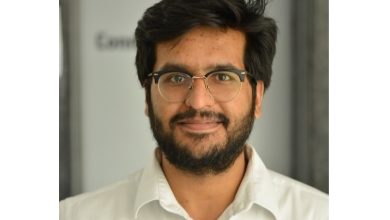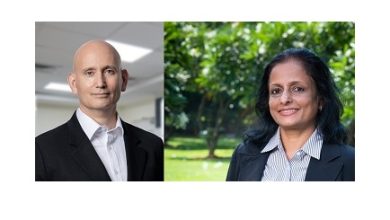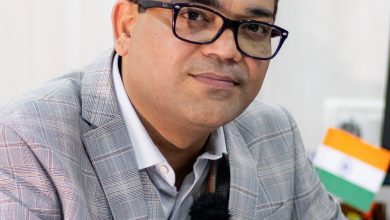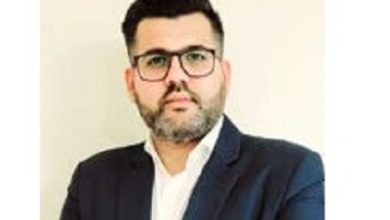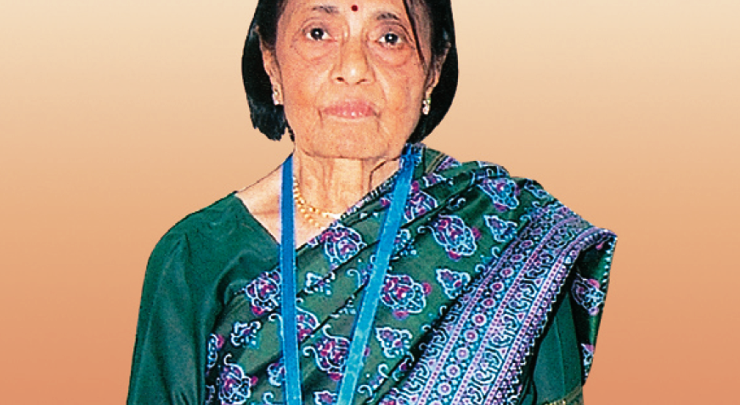
Like the lotus, emblem of creation in many mythologies, Dr S Padmavati the first female cardiologists of the country has been the force behind many developments in the field of cardiology in India, discovers M Neelam Kachhap
War changes your life. The frail figure seated at the modest office in Delhi tells me between bouts of silence. After all it was the turning point in her life. For Dr Padmavati Sivarama Krishna Iyer—fondly known as Dr Padmavati—was forced to leave her homeland Burma because of world war II. The scars are still fresh in her memory as she recounts her childhood days, her school, her early life in Burma. Then President and Chairman Board of Directors, All India Heart Foundation and Chief Consultant, Cardiology, National Heart Institute, New Delhi had many such inspiring stories to tell. As we settle down to chat she starts peeling the layers of memories to let me have a peak into her enriching cardiologist life.
After moving out from Burma Dr. Padmavati, still a student of medicine finished her specialisation in London, UK, USA and Sweden. She drew inspiration from stalwarts such as Dr. Paul Dudley White—the founder of preventive cardiology and Helen Taussig— founder of pediatric cardiology, under whom she trained.
On her return to India she joined the Lady Hardinge Medical College, Delhi, becoming the professor & HOD of Medicine. She subsequently became Director Principal Maulana Azad medical College & associated Irwin & GB Pant Hospital, Delhi. She was responsible for the development of departments of cardiology at the Lady Hardinge Medical College and GB Pant Hospital.
This octogenarian is the first women cardiologist of the sub-continent and in her fruitful career has published over 300 papers in Indian and foreign journals, chapters in textbooks and other magazines and volumes. She has also served on various national and international bodies like World Heart Federation, Asian Pacific Heart Network, Asian Pacific Society of Cardiology, National Academy of Medical Science, Cardiology Society of India and Indian Council of Medical Research.
Even at the age of 80 awards and recognitions followed her. She was awarded Ph. D at Sri Venkateswara University, Tirupati, Andhra Pradesh. Among her many awards Padma Vibhushan in 1992, Padma Bhushan in 1967, Harvard Medical International Award 2003 and Dsc (Hon) of Madras University 1994 hold utmost importance to her.
Here we present excerpts from the interview.
Tell us about your early days?
I was born in Burma not in India. I would not have been here but for the war. After coming here we had to start life from a scratch. Soon after we came the war ended. Then I went abroad, went to the UK to do my post graduate studies and then I went to the USA to specialise in cardiology. So when I came back, I was offered the job of lecturer in medicine at the Lady Hardinge Medical College. There was no other job. Anyway I took it and I don’t think I have done badly in that because after that I was able to start cardiology in northern India then built up a cardiology department, did a lot of research on diseases which are prevailing in India at that time like rheumatic heart disease which is dying in the West but it was still prevalent in India
When you came back from USA, did you know that you were the only female cardiologist in India?
Well, more or less. Later I trained many women to be cardiologists. Today I have so many students, females who are cardiologists and they are doing very well.
Did you find any difficulty in setting up a cardiology department in India?
No, it was very easy. I was very popular because there was nobody else working for this cause. It was very easy to get on with people. We started a cardiac clinic at Lady Hardinge in those days. They were very rigid so they would not allow male patients in the hospital. Today things have changed there are a lot of male patients. People in Delhi are generally very supportive so we started many new things in cardiology because in those days in India there was nothing. Today India has grown very well in cardiology.
Tell us about your cardiology experience?
I had two academic positions, first at Lady Hardinge Medical College and then at Maulana Azad Medical College. After I retired I joined the National Heart Institute because it was part of the Heart Foundation. I started the Heart Institute and today it is one of the major heart institutes in Delhi as well as in the country. It’s not very rich institute like the some of the other in cardiology but we aim at excellence and then we aim at not so rich but middle class people and so far we have been able to manage it alright. We are also doing research and have French students for the DNB in cardiology.
When you started your cardiology department, what kind of patients did you get?
Back then we used to see a lot of children with rheumatic heart diseases. Many of them still come back for check-ups even today. These are people who have survived the attacks and who have been treated, so what we saw mostly was rheumatic heart disease. We also got patient with heart attacks. In those days the diagnosis was very primitive. Even in the west because the west has just evolved in the last 50 years, before that there was nothing.
What is the most common heart ailment in India?
In India today I think the most common cause of heart disease is heart attack, what we call as coronary heart diseases, this is most important cause as well as high blood pressure. And we have another disease, which nobody is bothered about- the disease of the poor, rheumatic heart diseases.
How has the field of cardiology changed over the years?
Today India has grown very well in cardiology. There are two things to every disease treatment and prevention. Definitely, treatment has improved, especially in the private sector. There are big hospitals, not only one hospital but a chain of hospitals where all the facilities are available, of course at a price. I don’t blame them because new technology is always expensive and modern medicine consists of a lot of technology.
I think what we should have in India is, in addition to treatment is to have a big preventive programme because we cant prevent heart disease. The reason why we have got so many heart diseases is number one- we are living longer, we have controlled infectious diseases. Secondly our lifestyle—diet, exercise, and smoking—all these lead to the development of high blood pressure, high cholesterol and obesity. So we need to educate people and train them to prevent the disease.
Tell us about the Heart Foundation?
Heart Foundation’s main work area is in prevention. We observes four important days every year. One is World Heart Day, which falls in September. On this day we hold a big meeting with the general public mostly at Shantivan or in Raj Ghat Delhi. This is followed by another session at the India International Center where we get a lot of educated people who come to listen to talk, discuss and have a dialogue with experts about how to prevent heart diseases. Then we observe No Smoking Day and that’s our biggest show. There we teach or rather try to teach people about how not to smoke. The third important day is World Diabetes Day on November 14. On this day also we have a similar dialogue to make people aware of diabetes, to get their blood sugar checked because if you don’t check then you don’t know and we also have World Health Day on April 7. Every year we have a different theme but nevertheless we stress on heart diseases. Like this we have various educational programmes.
You are 80 years old and still working. Do you think you have achieved everything? (August 2008)
Yes. I gave an oration in Thirupathi, two weeks ago. Mentally I am fit and physically I swim everyday to keep fit. Don’t I look fit? (chuckles)
What else you do in your free time?
I have lot of work. I am still writing papers for Journals. I get a lot of invitation to write so I am used to it. Then I look after the Heart Foundation and I am also involved in other research societies worldwide. I have to write chapters for textbooks, I still see patients here, so I am still very active.
Your message to young doctors…
Well the youngsters today have much more options than we had in our days. Yet you would not find many of them pursuing academic activities. I would like to tell them that they should not say good-bye to academics.
If you like what you read then Support Us. Take 1-year print copy for 1920/- and save Rs480+ Rs600.

